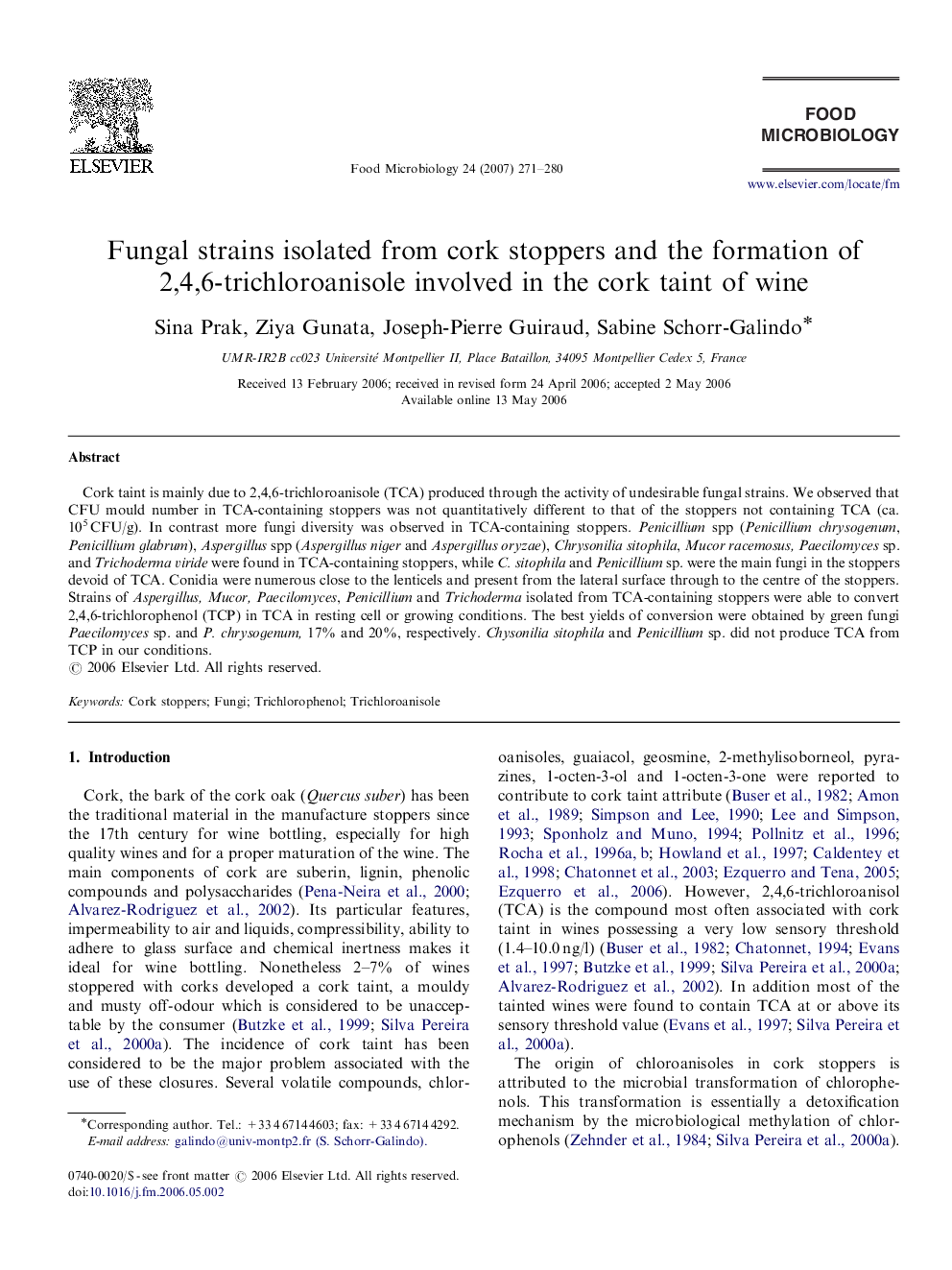| Article ID | Journal | Published Year | Pages | File Type |
|---|---|---|---|---|
| 4363865 | Food Microbiology | 2007 | 10 Pages |
Cork taint is mainly due to 2,4,6-trichloroanisole (TCA) produced through the activity of undesirable fungal strains. We observed that CFU mould number in TCA-containing stoppers was not quantitatively different to that of the stoppers not containing TCA (ca. 105 CFU/g). In contrast more fungi diversity was observed in TCA-containing stoppers. Penicillium spp (Penicillium chrysogenum, Penicillium glabrum), Aspergillus spp (Aspergillus niger and Aspergillus oryzae), Chrysonilia sitophila, Mucor racemosus, Paecilomyces sp. and Trichoderma viride were found in TCA-containing stoppers, while C. sitophila and Penicillium sp. were the main fungi in the stoppers devoid of TCA. Conidia were numerous close to the lenticels and present from the lateral surface through to the centre of the stoppers. Strains of Aspergillus, Mucor, Paecilomyces, Penicillium and Trichoderma isolated from TCA-containing stoppers were able to convert 2,4,6-trichlorophenol (TCP) in TCA in resting cell or growing conditions. The best yields of conversion were obtained by green fungi Paecilomyces sp. and P. chrysogenum, 17% and 20%, respectively. Chysonilia sitophila and Penicillium sp. did not produce TCA from TCP in our conditions.
